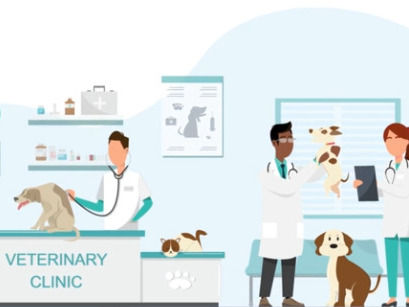Variants in 3 genes account for most dog coat differences
Method for pinpointing gene combinations useful for studies of human disease
Advertisement
Variants in just three genes acting in different combinations account for the wide range of coat textures seen in dogs — from the poodle's tight curls to the beagle's stick-straight fur. A team led by researchers from the National human genome Research Institute (NHGRI), part of the National Institutes of Health, reports these findings in Science .
"This study is an elegant example of using genomic techniques to unravel the genetic basis of biological diversity," said NHGRI Scientific Director Eric Green, M.D., Ph.D. "Genomics continues to gain new insights from the amazing morphological differences seen across the canine species, including many that give clues about human biology and disease."
Until now, relatively little was known about the genes influencing the length, growth pattern and texture of the coats of dogs. The researchers performed a genome-wide scan of single-nucleotide polymorphisms, in 1,000 individual dogs representing 80 breeds. These data were compared with descriptions of various coat types. Three distinct genetic variants emerged to explain, in combination, virtually all dog hair types.
"What's important for human health is the way we found the genes involved in dog coats and figured out how they work together, rather than the genes themselves," said Elaine A. Ostrander, Ph.D., chief of the Cancer Genetics Branch in NHGRI's Division of Intramural Research. "We think this approach will help pinpoint multiple genes involved in complex human conditions, such as cancer, heart disease, diabetes and obesity."
The researchers found an alteration in the RSPO2 gene that results in wiry hair that grows in a pattern that gives the dogs a mustachioed look with long details called furnishings. Examples of dogs with wiry coats are Scottish terriers, Irish terriers and schnauzers. Long hair that is silky or fluffy was linked to a variant in the FGF5 gene. Cocker spaniels, Pomeranians and long-haired Chihuahuas are examples of dogs with long coats. A variant in the KRT71 gene produces curly coated dogs, such as the Irish water spaniel. Finally, if all three variants are present, a dog has a long and curly coat with furnishings. Examples of this type of breed include poodles and Portuguese water dogs.
"We don't yet know the precise roles, if any, of these three genes in the variety of hair textures seen among humans," Dr. Ostrander said. The FGF5 (long hair) gene and KRT71 (curly) gene have been found to affect hair in mice and cats in addition to dogs, so humans may be included as well. The RSPO2 gene has not been previously identified to influence hair texture in mammals, but it does belong to a pathway that has been associated with a coarse hair type found in some people of East Asian ancestry.




















































